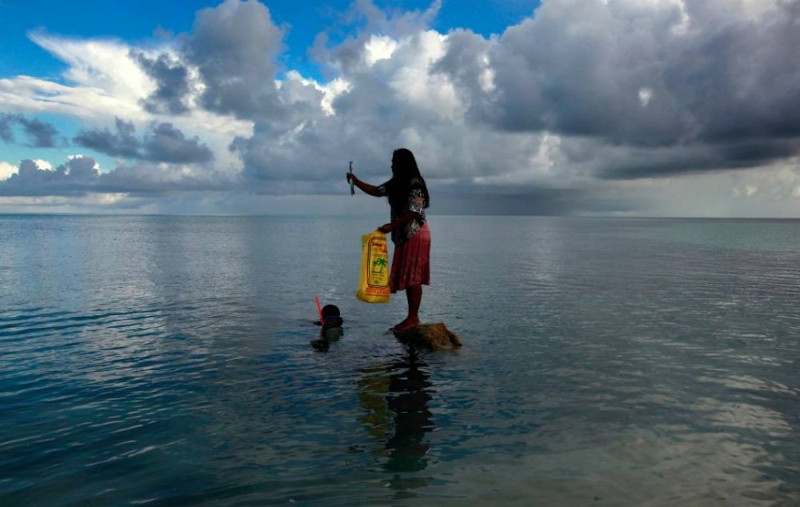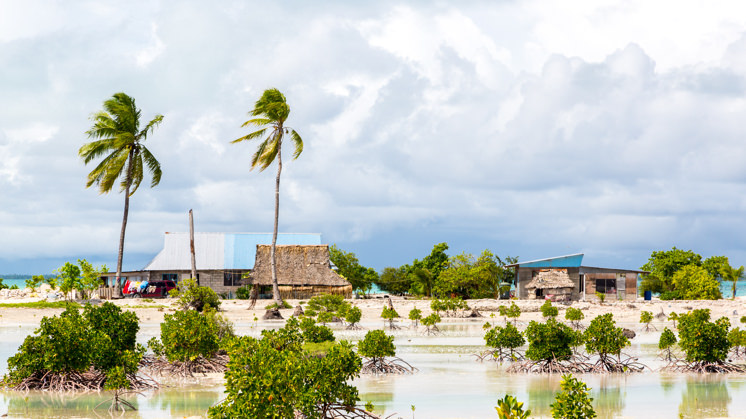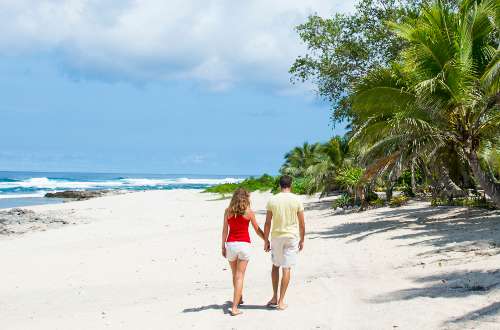
Richard Butler | Exclusive Report By Laurie Goering of Sight Magazine | OCT 24th, 2020
As climate change drives more disasters and displacement in the Pacific islands, Australia should relax its immigration policies to allow easier movement of people that would shore up regional security and support its economy, researchers said.
Allowing threatened islanders more opportunities to live and work in Australia, when necessary, could save on aid spending, ease human suffering and help Australia with key labor shortages, they said in a policy brief published on Thursday.
“We should be putting things in place now rather than scrambling to respond in an ad hoc manner” as climate threats accelerate, said Jane McAdam, a law professor at the University of New South Wales and a co-author of the brief.

For now, such potential shifts are on the radar “but it’s not something people are actively working on, as [climate change] is often still perceived as a future problem”, she told the Thomson Reuters Foundation in a video interview. Between 2008 and 2018, 80 per cent of new displacements caused by disasters around the world happened in the Asia-Pacific region, the study noted.
The low-lying Pacific islands are particularly at risk as sea level rise and worsening storms – such as Cyclone Harold, a top-strength storm that pummeled Fiji and Vanuatu in April – make life more perilous there. Australia and New Zealand have long helped their island neighbor’s with aid, particularly when major cyclones strike.
Australia is also a major donor to efforts to build resilience to climate risks in Pacific island nations, the report noted. But displacement within and from the Pacific islands “is likely to increase as disasters intensify and become more frequent“, something Australia cannot afford to ignore, it said.
COVID-19 shortages
The country has had a taste of the potential economic disruption that can come with crises this year when efforts to deal with the COVID-19 pandemic led Australia to largely close its borders and shut down incoming flights. Without the visiting backpackers and gap-year students the country often relies on, mango farmers, for instance, have struggled to find laborers to pick their crops.
Just this week, 200 islanders from Vanuatu arrived in Australia on an exemption to the closed-border policy to help with the harvest, said McAdam, director of the Andrew & Renata Kaldor Centre for International Refugee Law.
“Pacific island labor is an essential part of particular industries in Australia,” she said.

Climate Change results to Submerged Kiribati Island
Existing visa systems allow island migrant workers to come to Australia for up to three years – but without their families or any right to permanently remain, she said.
That would need to change if one aim of immigration policy, in an era of worsening climate change, were to allow the islanders most at risk a chance to resettle permanently in Australia. Today, people forced from their country by climate impacts have no recognized rights under international refugee law.
While migration – like climate change – is a politically charged issue in Australia, the numbers of potential arrivals from the islands would be relatively small, McAdam said.
Australia currently accepts about 130,000 permanent migrants to the country each year, she said. If the entire populations of Kiribati and Tuvalu – two of the Pacific islands most threatened by climate change – were to relocate to Australia in one year, they would still number fewer than that annual total, McAdam said.
Most islanders are not clamoring to move to Australia, preferring to remain at home if at all possible, their leaders say. But the risk, if Australia fails to provide a migration safety valve to move the most vulnerable out of harm’s way, could be worsening regional poverty, instability and potential conflict, McAdam said.
“None of that is in Australia’s interest,” she added.





